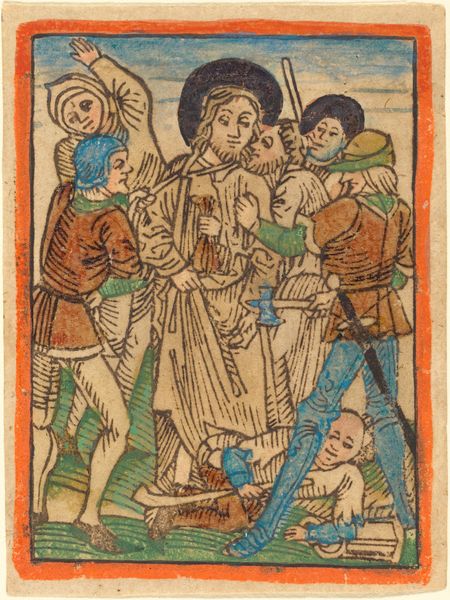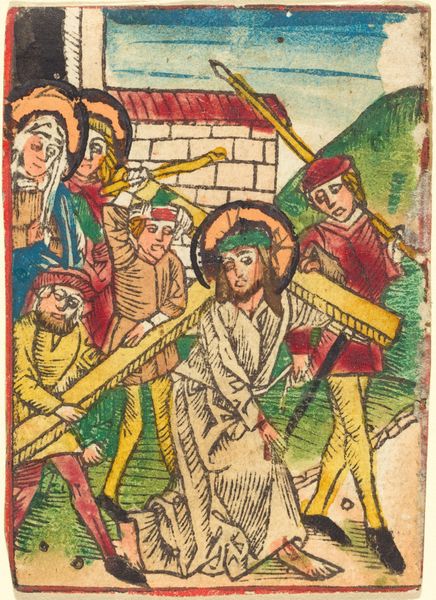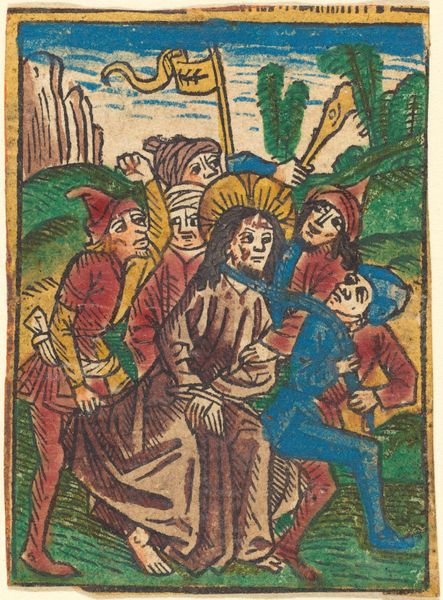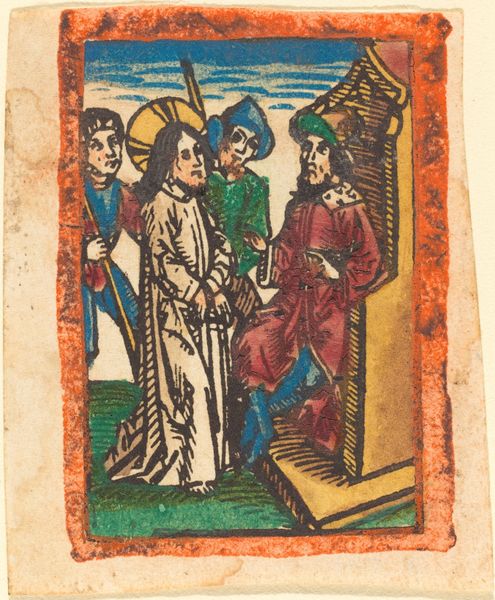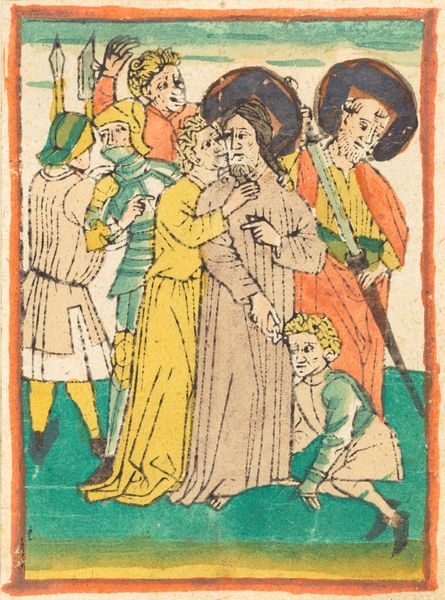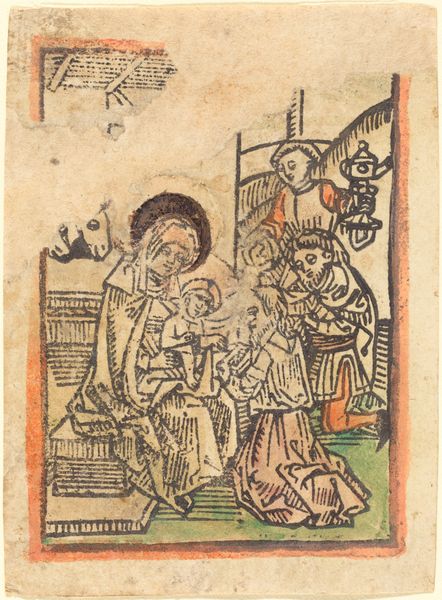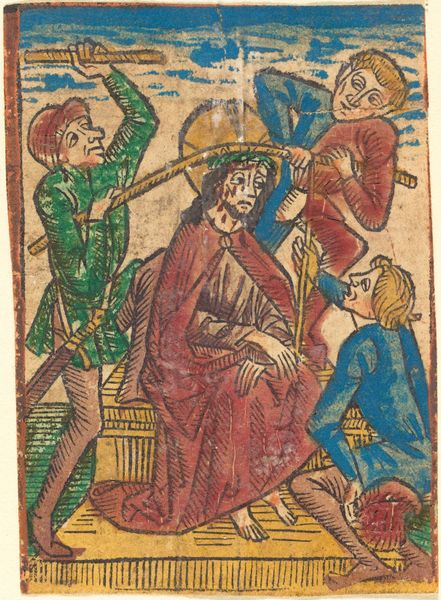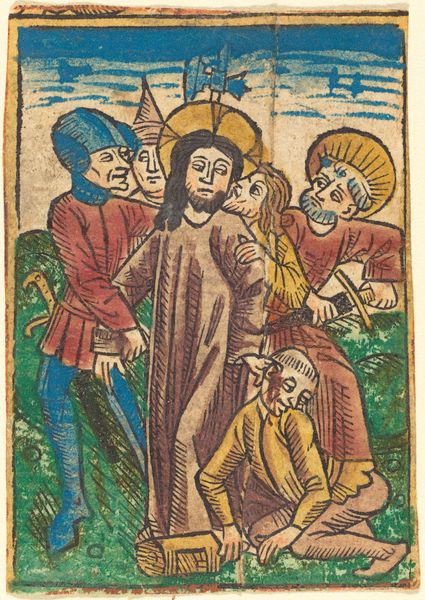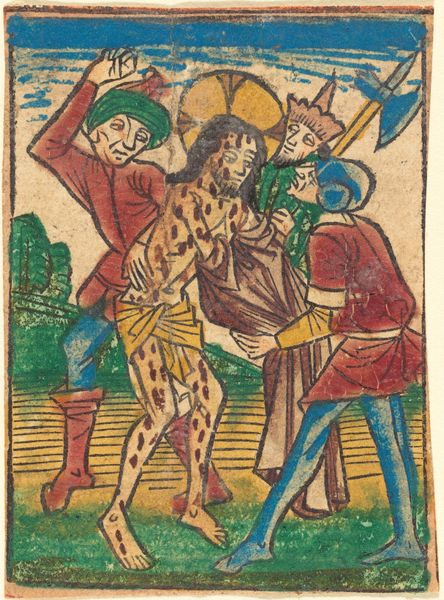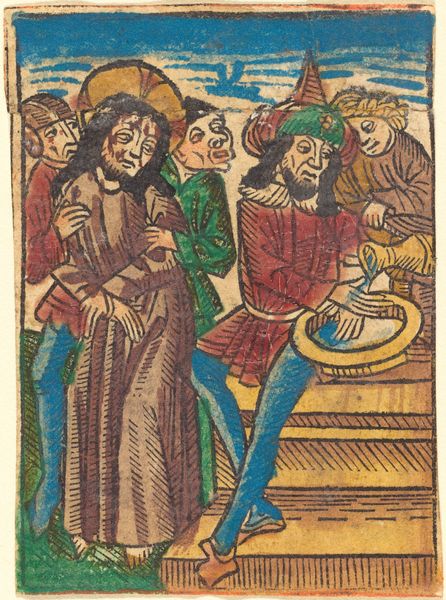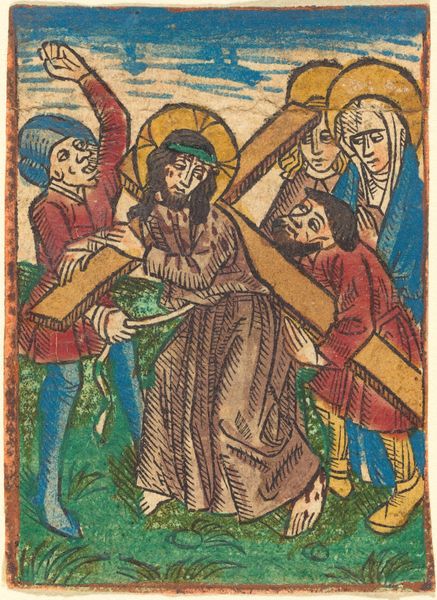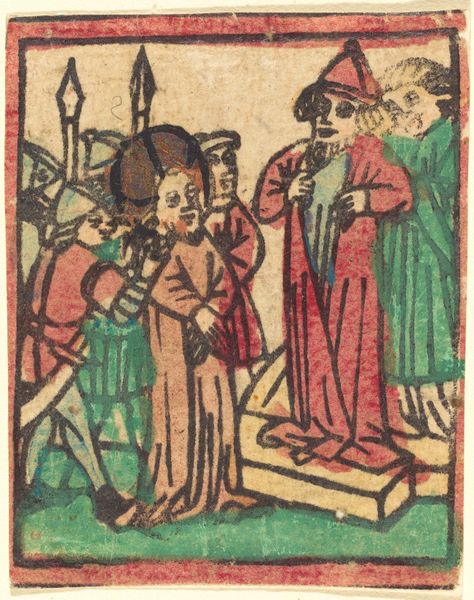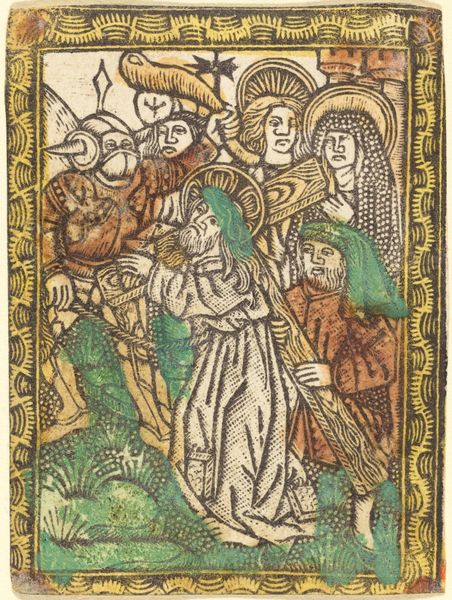
coloured-pencil, print
#
coloured-pencil
#
medieval
#
narrative-art
# print
#
figuration
#
coloured pencil
#
history-painting
Copyright: National Gallery of Art: CC0 1.0
Curator: What strikes you most about this piece? To me, the weight of it—not just the implied weight of the cross, but also the cultural baggage. This is an early print, dating to about 1470, titled *Christ Carrying the Cross*. Editor: It's surprisingly delicate for such a weighty subject. The lines are clean, almost sparse. The composition has a beautiful balance with all the characters and the setting kept at minimum. I like how it emphasizes the physical burden—the way Christ is bent under the cross. It almost feels like a dance between the cross, Jesus, and his persecutors. Curator: Right. The physical is intrinsically tied to the social and political. Look at the faces of the figures surrounding Christ. There’s a real spectrum of emotions depicted, all heightened in this incredibly violent historical narrative which of course also has major socio-political relevance, still resonating in some societies today. How do you see that impacting the overall composition? Editor: Well, the restricted palette, the limited colors achieved by colored pencils on a printed line matrix, emphasizes the starkness of the moment. All this makes the scene really intense. It draws attention to the bare minimum we need to understand the human figures. It reminds the importance of reduction and distillation as strategies of creating significance. Curator: Yes, but within that apparent simplicity, there are complex codes being communicated! The portrayal of power, faith, and suffering are conveyed with cultural codes through those seemingly simple gestures, the figures’ clothing and faces—communicating the nuances of late-Medieval thought around piety, violence, and social order. Editor: The emphasis on the linearity is intriguing, particularly the lines used to render fabric. Almost calligraphic. It's interesting how it anticipates the clarity of later printmaking styles. Curator: Indeed. Looking at it now, considering it in its original context and continuing social impact, one cannot overlook the complex interplay between aesthetic and ethics. Editor: I agree, but seeing how skillfully it distills form is very insightful for anyone looking at printmaking or devotional imagery from this time.
Comments
No comments
Be the first to comment and join the conversation on the ultimate creative platform.
